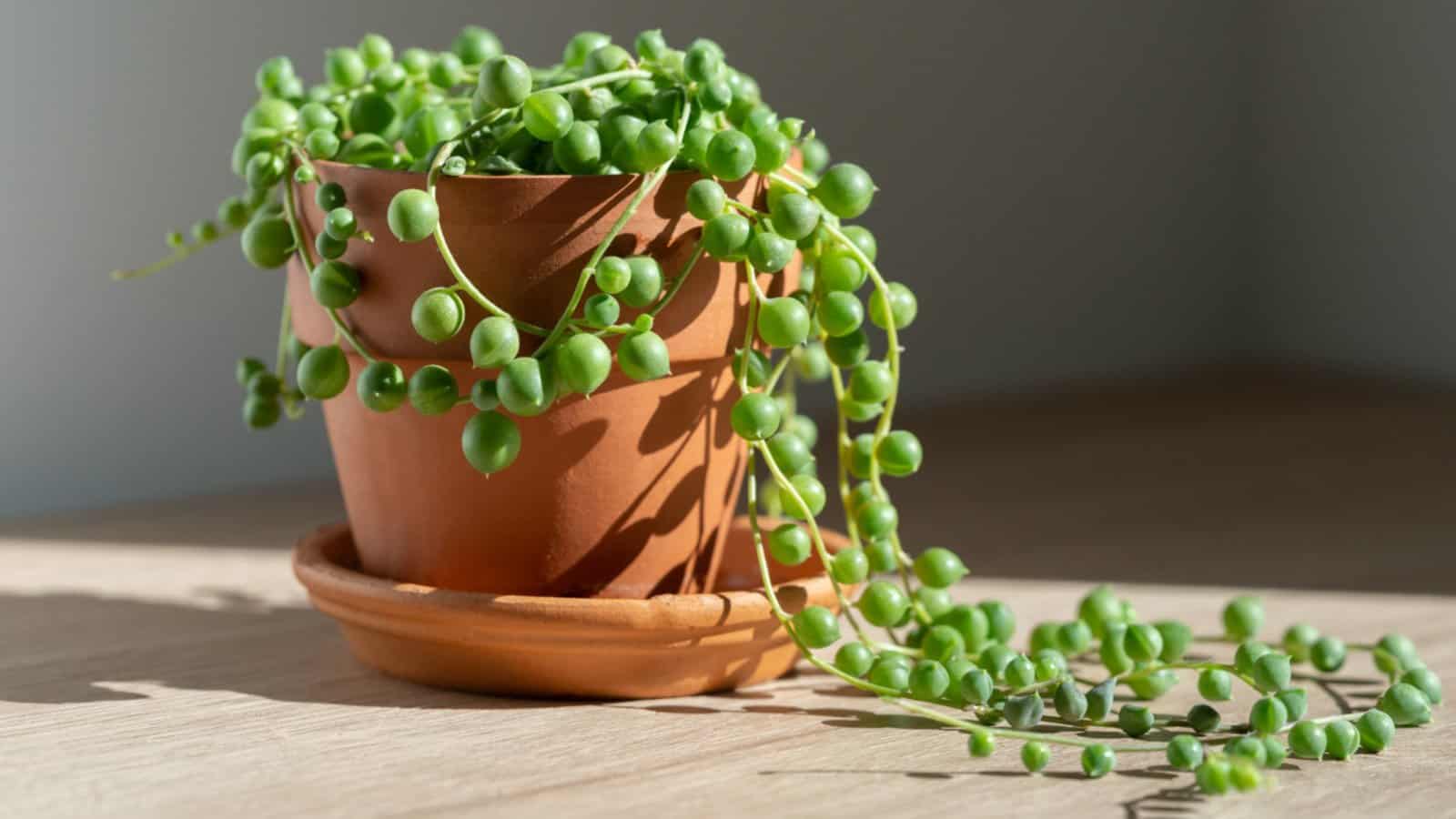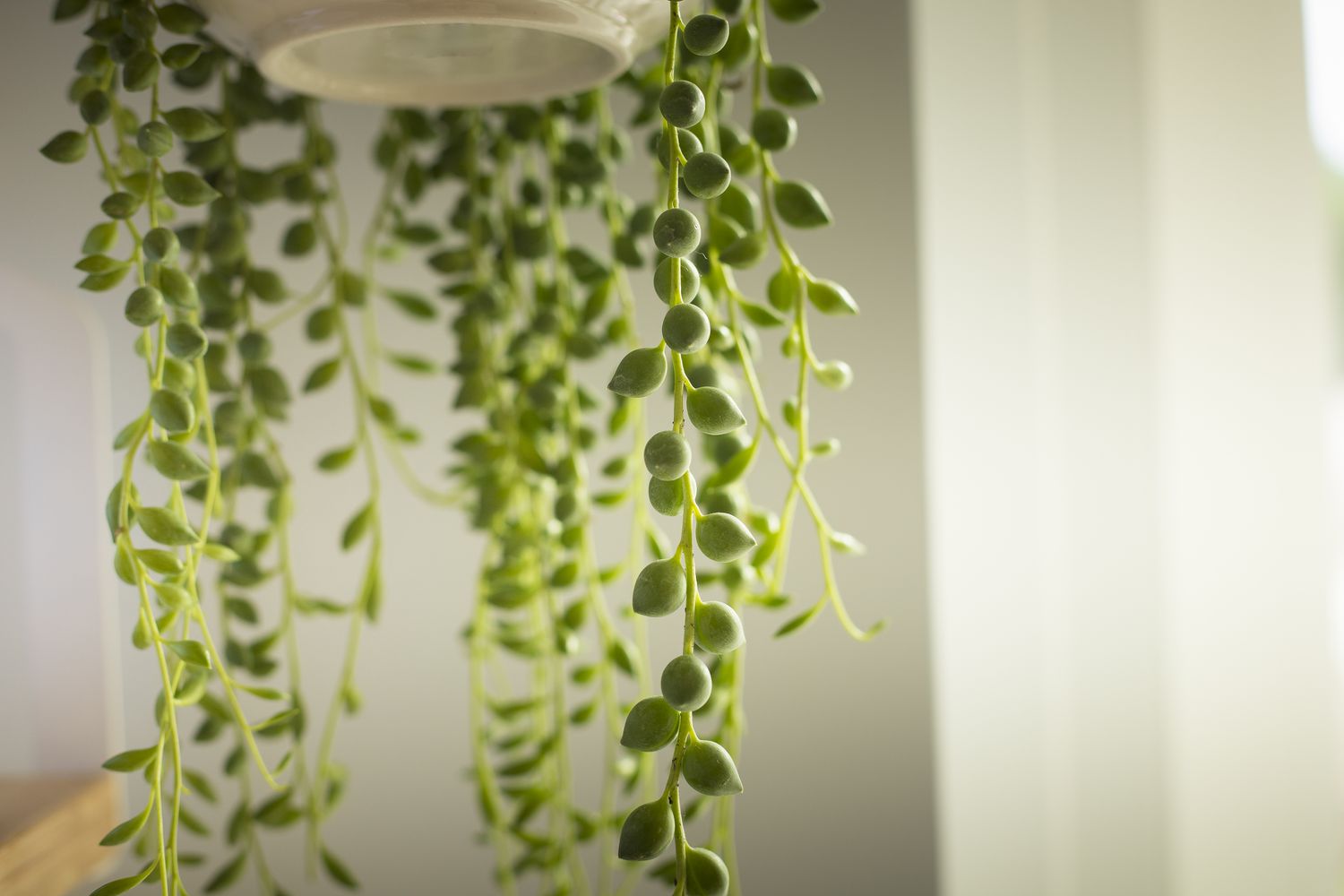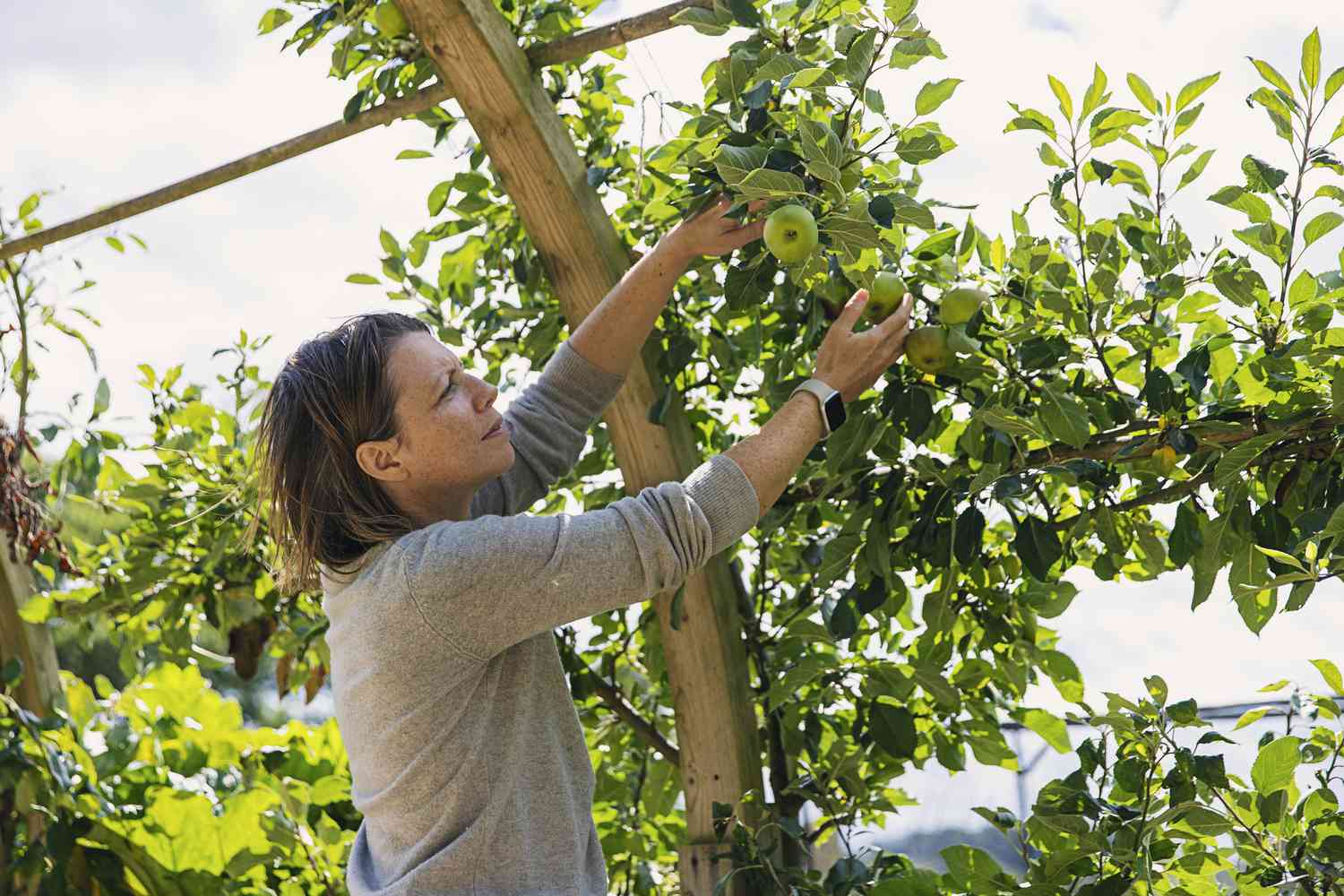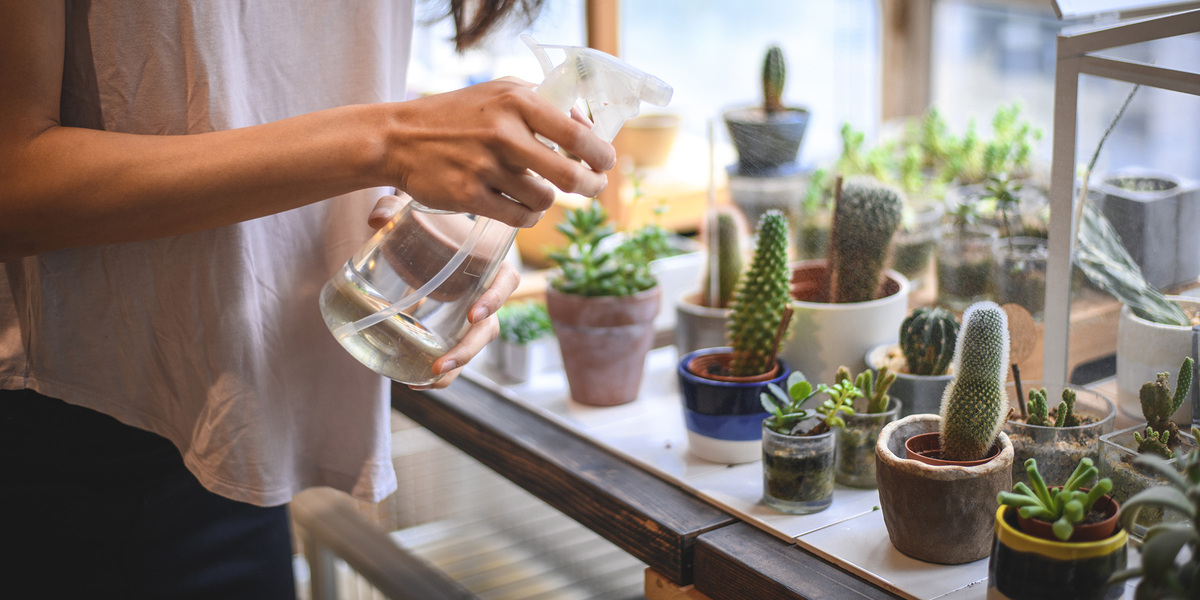Home>Gardening Techniques>Plant Care>How To Take Care Of Hen And Chick Succulents


Plant Care
How To Take Care Of Hen And Chick Succulents
Modified: February 9, 2024
Learn how to properly care for hen and chick succulents in this comprehensive guide. Discover essential tips and techniques for successful plant care.
(Many of the links in this article redirect to a specific reviewed product. Your purchase of these products through affiliate links helps to generate commission for Chicagolandgardening.com, at no extra cost. Learn more)
Table of Contents
Introduction
Welcome to the wonderful world of Hen and Chick succulents! Whether you’re a seasoned plant enthusiast or a beginner looking to add some greenery to your space, this article will provide you with all the information you need to successfully care for these unique and hardy plants.
Hen and Chick succulents, also known as Sempervivum, are a popular choice among plant lovers for their fascinating growth patterns and ability to thrive in various climates. These succulents are named after their rosette-shaped “hen” plant, which produces small offsets known as “chicks” that eventually grow and form their own rosettes. The beauty of Hen and Chick succulents lies not only in their intricate architecture but also in the range of vibrant colors they come in.
In this comprehensive guide, we will cover everything from pot selection and soil requirements to watering techniques, sunlight needs, fertilization tips, and even common pest and disease prevention. By the end of this article, you’ll be equipped with the knowledge to care for your Hen and Chick succulents with confidence.
Whether you’re planning to grow Hen and Chick succulents indoors or outdoors, in containers or in your garden, the principles of care are largely the same. It’s important to remember that these plants are well-adapted to surviving in challenging conditions, so they don’t require constant attention. However, following a few key guidelines will ensure their health and longevity.
Now, let’s delve deeper into the world of Hen and Chick succulents and discover the secrets to successfully nurturing these fascinating plants.
Understanding Hen and Chick Succulents
Before delving into the care tips, it’s important to have a solid understanding of Hen and Chick succulents. These unique plants belong to the Sempervivum genus and are native to mountainous regions of Europe, where they have adapted to harsh and arid conditions. The name “Sempervivum” translates to “always living,” alluding to their ability to survive and even thrive in challenging environments.
Hen and Chick succulents are known for their rosette-shaped growth pattern, with the mother plant (the “hen”) producing smaller, offset plants (the “chicks”) around it. This is a survival strategy for the plant, as the “hen” produces the chicks to ensure its genetic survival. Over time, the chicks will grow and eventually form their own rosette shape.
One of the most fascinating aspects of Hen and Chick succulents is their ability to change color throughout the year. Depending on the season, environmental conditions, and even the amount of sunlight they receive, the leaves can display an array of shades, including greens, reds, purples, and oranges. This ever-changing display of colors adds to the allure of these plants and makes them a stunning addition to any space.
In terms of size, Hen and Chick succulents can vary widely. Some varieties stay small, with rosettes measuring only a few inches in diameter, while others can grow larger, reaching up to several feet across. This variability in size allows for a lot of flexibility when it comes to choosing the perfect spot for your succulent.
Being succulents, Hen and Chick plants have adapted to store water in their leaves, allowing them to survive in dry and drought-prone conditions. This also means that they are prone to overwatering, so it’s crucial to find the right balance when it comes to watering them (which we’ll discuss in more detail later).
Now that we have a better understanding of Hen and Chick succulents, let’s move on to the next section, where we’ll discuss the importance of choosing the right pot and soil for these plants.
Choosing the Right Pot and Soil
When it comes to growing Hen and Chick succulents, choosing the right pot and soil is key to their overall health and growth. The right pot and soil combination will provide the necessary drainage and nutrition for these plants to thrive.
Firstly, let’s talk about pots. When selecting a pot for your Hen and Chick succulents, opt for a container with drainage holes at the bottom. These holes allow excess water to escape, preventing the roots from sitting in water and potentially rotting. You can choose pots made from various materials such as clay, ceramic, or plastic, as long as they have adequate drainage.
The size of the pot is also important. It’s best to choose a pot that accommodates the current size of the plant, with some room for growth. Avoid pots that are too large, as excess soil can retain moisture and lead to root rot. As the Hen and Chick succulents grow, you can gradually transplant them into larger pots to accommodate their increasing size.
Next, let’s discuss the importance of the right soil. Hen and Chick succulents require well-draining soil that allows water to flow freely through it, preventing the roots from sitting in moisture. A good mix for these plants is a combination of succulent or cactus soil and perlite or pumice. Succulent soil is specifically formulated to provide the well-draining properties that succulents need, while perlite or pumice helps to further enhance drainage.
It’s important to note that regular potting soil or garden soil is not suitable for Hen and Chick succulents, as they tend to retain moisture for longer periods, which can lead to root rot. Additionally, incorporating organic matter such as compost or peat moss into the soil mix should be avoided, as it can hold onto moisture and increase the risk of overwatering.
When planting and repotting your Hen and Chick succulents, ensure that the soil is loosely packed around the roots and that there is enough space in the pot for proper root growth. Avoid compacting the soil, as this can hinder drainage and cause the roots to suffocate.
In the next section, we will discuss proper watering techniques for Hen and Chick succulents.
Proper Watering Techniques
Watering is a crucial aspect of Hen and Chick succulent care, as these plants are adapted to survive in dry conditions. However, it’s essential to strike a balance and avoid overwatering, which can lead to root rot and other issues. Here are some proper watering techniques to keep your Hen and Chick succulents happy and healthy:
- Allow the soil to dry out: Before watering your Hen and Chick succulents, it’s important to check if the soil is completely dry. Stick your finger about an inch into the soil to determine its moisture level. If it feels dry at this depth, it’s time to water. However, if it still feels moist, wait a few more days before watering.
- Water deeply but infrequently: When it’s time to water, make sure to thoroughly soak the soil until water drains out of the bottom of the pot. This ensures that the roots receive enough moisture. However, it’s important to allow the soil to dry out completely before watering again. Overwatering can lead to root rot, so it’s better to underwater than overwater.
- Avoid water accumulation: Always make sure that excess water can freely drain from the pot. A pot with drainage holes is essential for this. Remove any standing water from the saucer or tray to prevent the roots from sitting in moisture.
- Adjust watering frequency based on the season: During the warmer months or when the Hen and Chick succulents are actively growing, they may require more frequent watering. In contrast, during the cooler months or when they are in a dormant state, watering can be reduced.
- Pay attention to environmental conditions: Factors such as humidity, temperature, and air circulation can influence the watering needs of your Hen and Chick succulents. For example, if you live in a humid climate, the soil may take longer to dry out, so adjust your watering schedule accordingly.
Remember, it’s better to underwater than overwater Hen and Chick succulents. These plants have adapted to withstand drought conditions and can tolerate dry periods. Overwatering is one of the most common mistakes made in succulent care, so observing the soil moisture and adjusting watering accordingly is crucial.
In the next section, we will explore the importance of providing adequate sunlight for Hen and Chick succulents.
Providing Adequate Sunlight
Hen and Chick succulents thrive in bright and sunny conditions, making sunlight a crucial component of their care. Adequate sunlight not only helps these plants achieve their vibrant colors but also ensures their overall health and growth. Here are some guidelines for providing the right amount of sunlight:
- Indoor location: If you’re growing Hen and Chick succulents indoors, place them in a spot where they can receive at least 6 hours of bright, indirect sunlight per day. South-facing windows typically offer the best light exposure. If natural sunlight is limited, you can supplement with artificial grow lights to ensure they receive adequate light.
- Outdoor location: When growing Hen and Chick succulents outdoors, choose a spot that receives full or partial sunlight throughout the day. Avoid areas with extreme temperatures or intense afternoon sun, as this can scorch the leaves. A bright, shaded area or filtered sunlight is ideal.
- Gradual acclimation: If you’re moving your Hen and Chick succulents from an indoor to an outdoor location or vice versa, it’s important to acclimate them gradually to prevent sunburn or shock. Start by placing them in a shaded area and gradually increase their exposure to sunlight over a period of a few weeks.
- Protect from intense sunlight: While Hen and Chick succulents require sunlight, it’s important to protect them from intense, direct sunlight during the hottest part of the day. This can cause their leaves to burn or blister. You can use shade cloth, sheer curtains, or physically move them to a shaded area during peak sun hours.
Proper sunlight exposure will promote compact growth and vibrant coloring in Hen and Chick succulents. If they don’t receive enough light, they may become leggy, with stretched-out stems and pale leaves. On the other hand, exposing them to too much direct sunlight can result in sunburn, characterized by brown spots or patches on the leaves.
Observing the response of your Hen and Chick succulents to sunlight is important. If they start to show signs of sunburn, such as discoloration or crispy leaves, move them to a more shaded area. On the other hand, if they appear pale or elongated, that may be an indication of insufficient sunlight exposure.
In the next section, we will discuss the importance of fertilizing Hen and Chick succulents to promote their growth and health.
Fertilizing Your Hen and Chicks
Fertilizing your Hen and Chick succulents is an important aspect of their care routine. While these hardy plants can survive in nutrient-poor soil, providing them with the right nutrients will help promote their growth and overall health. Here are some guidelines for fertilizing Hen and Chick succulents:
- Choose a balanced fertilizer: Use a fertilizer specifically formulated for succulents or cacti. Look for a balanced fertilizer with equal or lower levels of nitrogen, phosphorus, and potassium (NPK). High-nitrogen fertilizers can encourage lush growth, but at the expense of the plants’ natural compact form.
- Apply sparingly: Hen and Chick succulents do not require frequent or heavy fertilization. Apply the fertilizer sparingly, following the instructions on the product packaging. Overfertilizing can lead to salt build-up in the soil, causing root damage or burning the plant.
- Fertilize during the growing season: Apply fertilizer to your Hen and Chick succulents during their active growing season, which is typically in spring and summer. This is when they require more nutrients to support their growth and reproduction.
- Consider organic alternatives: If you prefer organic options, you can use compost tea or diluted seaweed extract as a natural fertilizer for your Hen and Chick succulents. These organic alternatives provide essential nutrients in a gentle and eco-friendly manner.
- Water before fertilizing: Before applying fertilizer, always ensure that the soil is moist. This prevents the roots from absorbing too high concentrations of nutrients, which can cause fertilizer burn.
Remember, fertilizing is not a substitute for proper care and environmental conditions. While fertilizers can enhance the growth of Hen and Chick succulents, they should not be used excessively or as a solution for other care issues. It’s important to prioritize well-draining soil, proper watering, and adequate sunlight before turning to fertilizers.
In the next section, we will explore strategies for preventing pests and diseases that can affect the health of Hen and Chick succulents.
Preventing Pests and Diseases
While Hen and Chick succulents are generally resilient plants, they can still be susceptible to pests and diseases. Taking preventive measures is vital to ensure the health and vitality of your succulents. Here are some strategies for preventing common pests and diseases:
- Inspect regularly: Make it a habit to regularly inspect your Hen and Chick succulents for signs of pests or diseases. Look for any unusual spots, discoloration, wilting, or sticky residue on the leaves. Catching early signs of infestation or disease can prevent further damage and allow for effective treatment.
- Maintain good airflow: Proper airflow is essential in preventing the buildup of moisture and the proliferation of pests and diseases. Avoid overcrowding your succulents and ensure they have enough space between each other to allow air circulation. This can be especially important if you are growing them indoors.
- Use well-draining soil: Using well-draining soil helps prevent the development of root rot and fungal diseases. Excess moisture in the soil can create a favorable environment for pests and diseases. Ensure that the soil dries out completely between watering sessions.
- Practice proper watering: Overwatering can weaken the defenses of Hen and Chick succulents, making them more prone to pests and diseases. Follow proper watering techniques and avoid allowing the plants to sit in water. Additionally, water from the bottom of the pot to prevent excess moisture on the leaves.
- Quarantine new plants: When introducing new plants to your collection, it’s best to quarantine them for a few weeks to monitor for any signs of pests or diseases. This prevents the spread of any issues to your existing plants.
- Keep a clean and tidy environment: Remove any fallen leaves or debris around your Hen and Chick succulents, as these can attract pests or harbor diseases. Additionally, regularly clean the pots and sanitize any gardening tools to prevent the spread of pathogens.
- Consider natural remedies: If you notice signs of pests, such as aphids or mealybugs, you can try natural remedies like wiping the leaves with a mixture of water and mild soap or using organic insecticidal soaps or neem oil. Be sure to follow the instructions on the product and test it on a small area before applying it to the entire plant.
By following these preventive measures, you can reduce the risk of pests and diseases affecting your Hen and Chick succulents. However, if you do notice any issues, it’s important to address them promptly to prevent further damage.
In the next section, we will discuss the propagation of Hen and Chick succulents, allowing you to easily expand your collection!
Propagating Hen and Chick Succulents
Propagating Hen and Chick succulents is an exciting and rewarding way to expand your collection or share these unique plants with friends and family. Fortunately, these succulents are relatively easy to propagate, and there are a few different methods you can try:
- Offsets: The most common method of propagation for Hen and Chick succulents is by using the offsets, also known as “chicks,” that grow from the mother plant. These smaller rosettes can be gently separated from the main plant once they have roots of their own. Plant the offsets in their own pots or in the garden, ensuring they have well-draining soil and receive adequate sunlight.
- Leaf cuttings: Another method of propagation is through leaf cuttings. Select a healthy, mature leaf from the mother plant and gently twist or cut it off. Allow the leaf cutting to callus over for a day or two, then place it on top of well-draining soil. Keep the soil slightly moist and provide bright, indirect sunlight. Over time, the leaf cutting will produce roots and eventually develop into a new plant.
- Stem cuttings: In addition to leaf cuttings, stem cuttings can also be taken to propagate Hen and Chick succulents. Choose a healthy stem and use a clean, sharp knife or shears to cut a section of the stem. Allow the cutting to dry and callus for a few days before planting it in well-draining soil. Keep the soil slightly moist and provide indirect sunlight. The stem cutting will develop roots and begin to grow new rosettes.
Regardless of the propagation method you choose, it’s important to handle the plants with care to avoid damaging the delicate roots or leaves. Patience is also key when propagating Hen and Chick succulents, as it can take several weeks or even months for the new plants to establish roots and begin growing.
As the propagated plants mature, they will develop into their own Hen and Chick succulents, with the potential to produce their own offsets or leaf and stem cuttings for further propagation.
Now that you have learned how to propagate Hen and Chick succulents, you can start expanding your collection and enjoying the process of growing these fascinating plants!
In the next section, we will explore common issues that may arise when caring for Hen and Chick succulents and ways to troubleshoot them.
Troubleshooting Common Issues
While Hen and Chick succulents are generally easy to care for, they can experience some common issues. Understanding and addressing these issues promptly will help ensure the health and vitality of your plants. Here are some common problems you may encounter while caring for Hen and Chick succulents and ways to troubleshoot them:
- Overwatering: One of the most common problems with Hen and Chick succulents is overwatering. Excessive moisture can lead to root rot and other issues. To remedy this, adjust your watering routine and allow the soil to dry out between waterings. Check the moisture level of the soil before watering to ensure it is dry.
- Underwatering: On the other hand, underwatering can also be a problem. If your Hen and Chick succulents appear wilted or shriveled, it may be a sign that they are not getting enough water. Increase the frequency of watering while ensuring proper drainage to prevent waterlogged soil.
- Leggy growth: Insufficient sunlight can cause Hen and Chick succulents to become leggy, with elongated stems and widely spaced leaves. Provide your plants with more direct sunlight or move them to a brighter location to encourage compact, healthy growth.
- Leaf discoloration: Discoloration of the leaves can result from various factors such as overexposure to sunlight, nutrient deficiencies, or pest infestation. Adjust the lighting conditions, ensure proper fertilization, and inspect the leaves for signs of pests. Treat any pest issues promptly using natural or appropriate remedies.
- Pest infestation: Hen and Chick succulents can attract common pests like aphids, mealybugs, or spider mites. Inspect your plants regularly for signs of infestation, such as webbing, sticky residue, or distorted leaves. Use natural or suitable insecticidal soaps or oils to treat the pests, and consider isolating affected plants to prevent the spread of infestation.
- Leaf and stem rot: Excessive moisture and poor drainage can lead to leaf and stem rot in Hen and Chick succulents. To prevent this, ensure that your plants are in well-draining soil, and adjust your watering routine accordingly. Remove any affected leaves or stems to prevent the spread of rot.
Regular observation and proactive care are essential for keeping your Hen and Chick succulents healthy. Being mindful of their watering needs, providing adequate sunlight, and addressing any issues promptly will help maintain their vibrant colors and beautiful form.
In the final section, we will recap the key points and emphasize the importance of proper care for Hen and Chick succulents.
Conclusion
Congratulations! You now have a comprehensive understanding of how to care for Hen and Chick succulents. By following the guidelines outlined in this article, you can ensure the health and vitality of your plants, allowing them to thrive and bring natural beauty to your space.
Remember to start with the basics, including choosing the right pot and well-draining soil, providing adequate sunlight, and practicing proper watering techniques. These fundamental care practices form the foundation for healthy succulents.
Fertilizing your Hen and Chick succulents in moderation and observing preventive measures against pests and diseases are essential for their long-term well-being. Regularly inspecting your plants, maintaining good airflow, and implementing organic pest control methods will help keep them thriving.
If you’re interested in expanding your collection or sharing the joy of Hen and Chick succulents with others, experimenting with propagation techniques can be a gratifying endeavor. Whether you choose to propagate through offsets, leaf or stem cuttings, it’s an exciting way to grow your succulent family.
Lastly, remember that caring for Hen and Chick succulents is not just about following a set of rules. It’s about cultivating a connection with these unique plants and enjoying the process of nurturing and observing their growth. Take the time to appreciate their different colors, textures, and forms as they transform throughout the seasons.
Now, armed with this knowledge and enthusiasm, you’re ready to embark on your journey of successfully caring for Hen and Chick succulents. Enjoy the beauty and tranquility they bring to your life, and may your succulent collection flourish with vibrant and healthy rosettes!





